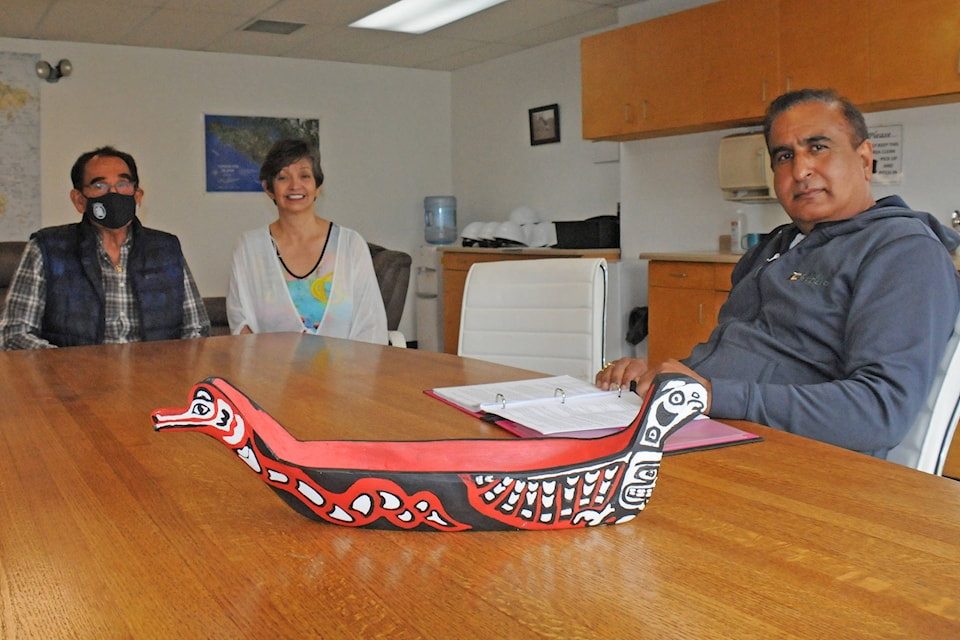Annie Watts is carving herself a new reputation, block by red cedar block.
Watts, a member of Tseshaht First Nation by the Alberni Valley, is known for her creativity in other ways. She recently started carving, and through the San Group received some leftover red cedar blocks from the company’s Coulson Sawmill.
Late in April she and her father, Tom Watts, presented a carved canoe to San Group owner Kamal Sanghera to thank him and his crew for the cedar blocks.
Carving is the latest way that Watts expresses her creativity. Food artistry was one outlet when she owned a restaurant in Vancouver featuring Indigenous dishes. She has written three cookbooks, including Where People Feast. Watts has also made a dozen button blankets and vests in addition to learning how to carve. Her goal is to replicate traditional masks that were her great-grandfather’s designs—designs that are passed down in families.
“Dad always needs more regalia,” she said. “That’s what I’m doing, between blankets and vests and masks.”
Sanghera was touched by Watts’ gift. “This is a proud moment for me to receive this,” he said.
Sanghera said there are parallels between Canada’s Indigenous Peoples and the culture his family brought from India. He is constantly learning about Nuu-chah-nulth ways as his business in the Alberni Valley grows, and said Watts’ presentation is especially poignant because of this cultural connection.
“This is very special,” he said. “This is our ancestors, this is our past. Without these kind of things we can’t tell our future generations the stories of why we are here.”
He said Watts’ gift of a canoe has now become part of San Group’s story in the Alberni Valley.
Canoes are a crucial part of Tseshaht history, Tom Watts explained. Up until white settlers arrived in the Alberni Inlet in 1860 Indigenous Peoples in the region only used canoes for transportation between their coastal villages. The Wattses included a binder of their First Nation’s history as a way for Sanghera to learn more.
The canoe is painted with a Thunderbird (tiickin) on one end and lightning snakes (He?iAiik) on the other: characters from a Tseshaht First Nation legend of the first great whale hunter, Watts explained.
“My great-great-great-great-great grandfather, his mother told him to go get a whale, so the thunderbird went out—he is a representation of my great-grandfather. The wings came out when he spotted a whale, and two lightning snakes came out and shocked the whale. The whale (was taken) to shore and fed the people.”
susie.quinn@albernivalleynews.com
Like us on Facebook and follow us on Twitter
